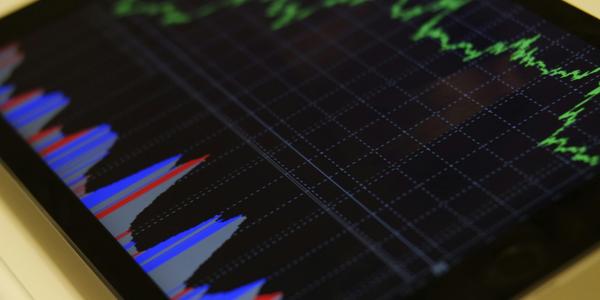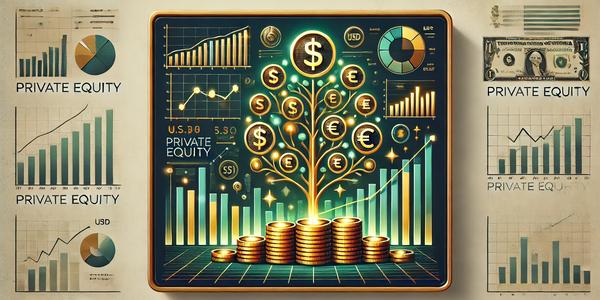A notable consolidation pattern has given way to a potential upsurge for XRP, with traders eyeing a move that could lift the token by roughly 60% in the coming days. The breakout arrives amid a broader backdrop of ongoing legal proceedings between Ripple and the U.S. Securities and Exchange Commission (SEC), a development that has repeatedly influenced price action and market sentiment. If the current dynamics hold, XRP could target levels around the $4 mark, though a retreat toward key support zones remains plausible if the breakout loses momentum. The unfolding narrative combines classic chart architecture with evolving regulatory signals, creating a complex but potentially rewarding setup for traders and investors who monitor both technicals and law/regulatory developments closely.
Technical Pattern Analysis and Breakout Dynamics
Symmetrical triangles are a type of chart pattern widely regarded as neutral-to-bullish continuation formations when price breaks above the upper boundary with accompanying gains in volume. In XRP’s case, this classic pattern took shape as the price oscillated within converging boundaries, forming a precise apex where supply and demand meet. The breakout stage began on January 11, marking the transition from consolidation to an expansion in price range and participation by buyers. The pattern’s geometry provides a straightforward mathematical target: the maximal height of the triangle, measured from the apex to the base, can be projected upward from the breakout point to estimate a price objective.
Applying that conventional calculation to XRP’s chart yields a notable upside target near the $4 area. This projection relies on a disciplined method: measure the triangle’s height at its widest point and add that distance to the breakout price, generating a theoretical ceiling that aligns with typical continuation expectations. In practice, the market’s immediate action has shown that the early breakout was accompanied by an increase in trading volume, a factor that enhances the odds of sustaining momentum beyond the initial push and reducing the likelihood of a false breakout. The interaction between price and volume is a critical element that market participants often scrutinize when assessing the strength of a breakout from a symmetrical triangle.
On the price chart, XRP’s 12-hour timeframe offers a clearer view of the evolving dynamics. A key observation from mid-January is the immediate proximity of XRP to the triangle’s upper boundary during the breakout phase, followed by weeks in which price action tested the feasibility of maintaining a higher trajectory. As the pattern matured, the price moved into the breakout territory and then hovered in the vicinity of the breakout point, signaling a potential sustained advance if buyers continue to outpace sellers. Conversely, a failure to sustain the breakout could invite a retest of the lower trendline, a scenario that traders typically monitor closely for confirmation of a shift in momentum.
Support and risk anchors are essential considerations in this setup. The closest wave support sits near the triangle’s lower boundary, with a rough footing around $2.37 as of January 12. A decisive break below this level risks undermining the bullish breakout premise and could shift the near-term bias toward the lower boundary’s domain, inviting a move toward the pattern’s lower trendline. Moreover, the lower trendline aligns in proximity with the 50-period to 12-hour exponential moving average (50-12H EMA), which hovers near $2.30. This confluence of a rising trendline and a well-known moving average adds a meaningful test for the bulls: if the price fails to hold above these references, the pattern’s bullish thesis could be compromised and the path to the downside could gain traction.
Nevertheless, the primary takeaway remains that holding above the upper trendline would substantially increase the probability of XRP achieving the targeted $4 objective. A disciplined breakout that leads to higher volumes and sustained participation would reinforce the pattern’s bullish interpretation and enhance the likelihood that the price will respect the calculated target rather than retreat prematurely. The relationship between trendlines, moving averages, and volume provides a composite signal that seasoned traders often use to gauge the likelihood of continuation versus consolidation. In this context, the current configuration favors bulls, provided there is no abrupt reversal in market dynamics or a shift in headline risk tied to Ripple’s ongoing legal considerations.
Near-Term Price Action and Scenario Assessments
The near-term view for XRP revolves around the delicate balance between the triangle’s boundaries, momentum indicators, and the evolving information environment surrounding Ripple’s courtroom proceedings. An important baseline for the immediate horizon is the potential trajectory from the current price toward the upper boundary, which, if successful, could culminate in the anticipated ascent toward the $4 target. Traders will likely watch for additional confirmations, such as a fresh uptick in intraday volume as prices test the breakout’s persistence, along with a series of bullish candlestick formations that signal sustained buying pressure.
A critical risk factor in the near term is the possibility of a pullback toward the lower trendline, especially if the market senses new or intensified headline risk or if momentum wanes after an initial surge. The area around $2.37 represents a practical checkpoint. A movement decisively below this support zone would raise the probability of a test of the triangle’s lower boundary and could usher in a more pronounced corrective phase toward roughly $2.30, where the 50-12H EMA stands. In such a scenario, the price could encounter a confluence of support that supports a temporary stabilization, but the overarching pattern would be placed under stress, potentially eroding the bullish narrative if buyers fail to reclaim the momentum.
In a bullish outcome, XRP’s price would hold above the upper trendline and demonstrate continued strength through successive sessions. The ideal sequence would involve a consolidation and a renewed push in higher volumes, reinforcing the breakout’s legitimacy and widening the likelihood that the measured target near $4 gets realized within the “next couple of days,” as some market observers suggested in mid-January. The timeframe here is inherently dependent on several interlinked factors, including the pace of adoption of the news cycle, shifts in institutional participation, and the broader risk appetite within the cryptocurrency space. The short-term window remains dynamic and sensitive to daily developments; as such, traders should prepare for a spectrum of outcomes within a few trading sessions.
Another dimension worth highlighting is the interaction between technical setups and macro-market sentiment. When a chart pattern signals a bullish continuation, it often benefits from a supportive backdrop in the broader crypto market, a scenario that can accelerate a move into the target zone. Conversely, if there is a cooling in market risk appetite or if negative headlines intensify around Ripple’s legal case, the pattern could face headwinds despite the seemingly favorable geometry. In this framework, the near-term action becomes a test of both price mechanics and information clarity, with the price chart acting as a running narrative of buyers’ willingness to defend the breakout and push toward the higher objective.
Finally, it is essential to consider the role of momentum indicators in validating the breakout beyond the immediate price action. A sustained uptick in momentum would typically accompany a sequence of higher highs and higher lows within a broader uptrend channel, reinforcing the conviction among bulls. If momentum deteriorates, even in the face of a price action that momentarily clears the upper boundary, traders may demand a more consistent pattern of buying pressure before committing additional capital. The balance of these elements—price action, volume, and momentum—shapes the probability-weighted outlook for XRP over the near term, offering a structured framework for traders to manage risk while pursuing opportunity.
Ripple-SEC Legal Battle Developments: Strategic Milestones and Timing
A significant portion of XRP’s recent price dynamics can be traced to Ripple’s ongoing legal encounter with the U.S. Securities and Exchange Commission. In a notable development, XRP entered a symmetrical triangle breakout stage within hours of what some observers characterized as a small victory for Ripple within the broader litigation landscape. The legal timeline includes a federal judge’s administrative ruling that certain documents could be filed under seal, ensuring the confidentiality of sensitive information connected to Ripple’s summary judgment motion. Specifically, the judge approved sealing records that contain confidential, sensitive, and personally identifiable information tied to the summary judgment materials.
This ruling is notable for several reasons. First, it preserves the integrity of the sensitive factual and legal materials involved in the case while enabling the parties to proceed with the legal process with an appropriate level of confidentiality. Second, it intersects with a critical deadline for the SEC, which faced a January 15 deadline to file its appeal-related opening brief challenging key rulings in the Ripple case. The timing underscores how the judiciary’s handling of procedural steps can shape the information environment surrounding the case and, in turn, influence market expectations about Ripple’s posture and potential outcomes.
The SEC’s posture in the case has been to challenge the court’s decisions related to XRP’s status under the Howey test, including a ruling that Ripple’s regular sales did not meet certain tests of investment contract criteria. The appellate process is a central axis of investor sentiment, given that a reversal on appeal could alter the regulatory and market landscape for Ripple and its token. The recent developments contribute to a broader narrative in which Ripple seeks to solidify a more favorable regulatory interpretation or, at minimum, reduce the degree of uncertainty that has hovered over XRP since the lawsuit commenced in 2020. The appellate dynamics thus feed directly into price volatility because investors weigh potential outcomes against the costs, risks, and opportunities of continuing litigation.
Looking ahead, leadership changes at the SEC add another layer to the complexity of the situation. Reports in late December and January highlighted leadership transitions that could influence enforcement priorities and strategic emphasis. After the departure of SEC Chair Gary Gensler around January 20, information circulated about a potential change in the agency’s tone under the incoming leadership, with former Commissioner Paul Atkins anticipated to assume a more central role in the crypto enforcement conversation. This shift has important implications for Ripple, given the agency’s ongoing enforcement posture and the appellate strategy it pursues.
Analysts and observers offered cautious optimism about Atkins’s potential influence. The sentiment stems from Atkins’s stated preferences related to free markets and concerns about over-regulation. A prominent voice with prior SEC experience argued that Atkins might favor a recalibration of how crypto enforcement is conducted, potentially easing some of the tensions that have contributed to market volatility. The observers suggested that a more balanced or measured regulatory stance could reduce uncertainty for XRP and the broader crypto market, potentially supporting a more sustainable price trajectory for Ripple’s digital asset as litigation progresses.
Crucially, the market’s reaction to the prospect of leadership-driven shifts reflects a broader hypothesis: regulatory clarity and consistency can be a powerful tailwind for crypto assets that have faced persistent legal scrutiny. If Atkins and the SEC move toward a stance that is perceived as more predictable and proportionate, investors could interpret this as a step toward regulatory normalization, which, in turn, could strengthen sentiment for Ripple and XRP. Conversely, if enforcement remains aggressive or if the appellate process yields unfavorable outcomes, price volatility could persist or intensify, as participants reassess the risk-reward calculus embedded in Ripple’s litigation narrative.
The ongoing case continues to influence price action beyond the direct legal outcomes. Market participants monitor court filings, rulings, and procedural developments closely, interpreting these events through the lens of potential price catalysts. In this framework, the latest administrative sealing decision coincided with a broader reset in the market’s understanding of the legal timeline, reinforcing the idea that court procedures—and the timing of appeals and motions—play a meaningful role in shaping XRP’s near-term trajectory. As the case evolves, investors are likely to keep a close eye on both the courtroom dynamics and the evolving regulatory backdrop, recognizing that each can meaningfully alter XRP’s risk/return profile.
Regulatory Leadership, Market Sentiment, and the Crypto Landscape
The confluence of Ripple’s legal exposure and potential regulatory reforms creates a unique market dynamic for XRP. The prospect of a regulatory environment that is more predictable, coherent, and less adversarial could catalyze a more favorable sentiment among investors and institutions that have historically approached XRP with caution. In this context, the anticipated leadership shift toward Atkins could act as a catalyst for a tempered, more market-friendly enforcement stance, potentially softening some of the regulatory friction that has constrained the token’s broader adoption.
The market’s response to the potential for more favorable crypto policy tends to be subtle yet persistent. Investors may begin to price in a longer horizon of regulatory clarity, which could reduce the degree of policy risk that has historically priced into XRP and similar digital assets. This shift could, in turn, enable a more robust exploration of XRP’s fundamental value proposition within Ripple’s ecosystem, including the token’s utility in cross-border payments and other use cases that attracted attention during the early phases of Ripple’s growth.
However, it is essential to ground expectations in the reality that regulatory reform is a multi-faceted process driven by a broad array of factors beyond a single agency leadership change. The appellate path, court interpretations of the Howey test as applied to Ripple’s sales, and the interplay with other policy initiatives across the crypto space will all shape the ultimate trajectory. The market remains sensitive to both the specific outcomes of the Ripple case and the general regulatory currents that influence liquidity, risk appetite, and capital flows within cryptocurrency markets.
The interplay between the legal landscape and price dynamics creates a feedback loop: improved clarity can invite greater participation from new players, while persistent uncertainty can discourage it. In XRP’s case, the pattern of a bullish breakout combined with a potential shift in regulatory stance could reinforce a favorable cycle if market participants interpret the legal and regulatory signals as a pathway to reduced risk and greater scalability for the Ripple ecosystem. As with many crypto assets tethered to legal outcomes, the potential upside remains coupled with tail risks that require prudent risk management, diversified exposure, and a continuous process of information gathering and assessment.
Market Sentiment, Risk Management, and Investor Guidance
Investor sentiment surrounding XRP is influenced by an amalgam of technical signal, legal news, and regulatory expectations. The symmetrical triangle breakout, if validated by sustained trading volume and price action above the upper boundary, can be read as a technical confirmation of renewed demand for XRP and a willingness among market participants to bet on a continuation of the prior uptrend. However, a realistic assessment must acknowledge that even within a bullish chart pattern, the path to the target near $4 is not guaranteed and depends on a series of confirmations that can unfold over multiple sessions.
From a risk-management perspective, traders often consider the most likely downside scenario as a check against excessive leverage or premature commitments. In this case, the nearest support around $2.37 and the converging 50-12H EMA around $2.30 form a critical defense line. If price action breaks decisively below these levels, the probability of a sustained decline toward the pattern’s lower trendline increases, potentially triggering a deeper retracement or a trend reversal. This reality underscores the importance of stop placement, position sizing, and the need for ongoing reassessment of the trade thesis as new data arrives.
On the upside, the $4 target derived from the pattern’s height offers a clear objective, but the duration required to reach that level remains uncertain. The speed of the move will hinge on multiple factors, including the momentum of the breakout, the persistence of buying pressure, and the broader appetite for risk in the crypto space. Investors should be mindful of the fact that even when technical patterns point to favorable outcomes, external catalysts—such as macroeconomic shocks, regulatory updates, or unexpected legal developments—can abruptly alter the trajectory. Maintaining flexibility in strategy, establishing alert levels for key thresholds, and ensuring alignment with a well-defined risk framework are prudent steps for participants who wish to engage with XRP in this environment.
In terms of market storytelling, XRP’s trajectory often reflects a fusion of chart-driven expectations and narrative-driven catalysts. The technical setup presents a plausible path toward a substantial upside, while the legal and regulatory narrative provides context that can shape the pace and durability of any move. The best approach for investors is to integrate both perspectives: monitor the breakout’s validity on a day-to-day basis, remain vigilant for any signs of a weakening in momentum, and be prepared to adapt as new information emerges. In an arena characterized by rapid developments and high headline sensitivity, the most disciplined investors are those who balance a growth-oriented bias with a well-structured risk management plan.
Broad Crypto Context and Ripple’s Position
Within the broader crypto ecosystem, XRP’s narrative sits at the intersection of price technicals and regulatory uncertainty. The ongoing Ripple-SEC case has become a focal point for discussions about how digital assets are treated under the securities framework and how enforcement and adjudication will evolve in a landscape that encompasses both innovation and investor protection. As Ripple navigates this environment, market participants are watching for signs of regulatory clarity that could lay the groundwork for more stable growth across the sector, potentially elevating XRP and related assets to a new level of institutional acceptance.
Technical patterns like the symmetrical triangle breakout provide a structured lens through which traders can assess potential price movements, yet they operate within a shifting information environment. The confluence of a potential bullish breakout with a backdrop of legal contest gives XRP a distinctive risk-reward profile. If the legal landscape begins to show signs of greater predictability or if the appellate process yields outcomes that reduce regulatory ambiguity, the price ceiling around $4 could be reached more efficiently. On the other hand, persistent uncertainty or an adverse ruling could sustain or intensify volatility, as traders adjust their expectations to reflect new probabilities of various outcomes.
The near-term price action should be interpreted with a nuanced understanding of both chart patterns and the evolving legal framework. Investors who blend technical awareness with an appreciation for the regulatory timeline tend to be better positioned to navigate the volatile environment that often accompanies major crypto assets tethered to legal developments. A disciplined approach—combining clear entry points, predefined risk controls, and a readiness to adjust as new information arrives—offers the most robust pathway through a period that could remain technically constructive yet legally complex.
Conclusion
In summary, XRP’s current setup reflects a compelling combination of chart-pattern mechanics and legal/regulatory dynamics that together shape a potentially meaningful upside in the weeks ahead. The symmetrical triangle breakout carries a measured price objective near $4, contingent on continued volume-supported momentum and a sustained hold above crucial support around $2.37 and the nearby EMA near $2.30. The near-term path remains contingent on a balance between technical confirmation and the evolving Ripple-SEC narrative, with any decisive break above the upper boundary reinforcing the bullish thesis and undermining the bearish risks tied to the lower boundary.
At the same time, the Ripple-SEC legal process—and the possibility of leadership changes within the SEC—adds a layer of uncertainty that cannot be ignored. The potential for a more favorable regulatory stance under incoming leadership could reduce some of the regulatory and policy-related headwinds that have historically weighed on XRP’s price. Still, investors should approach the setup with disciplined risk management and a readiness to adapt as the legal timeline unfolds. The convergence of technical breakout signals, near-term support confluences, and evolving regulatory expectations makes XRP a focal point in the current market environment, where a well-structured approach can help capitalize on potential upside while managing downside risk.



